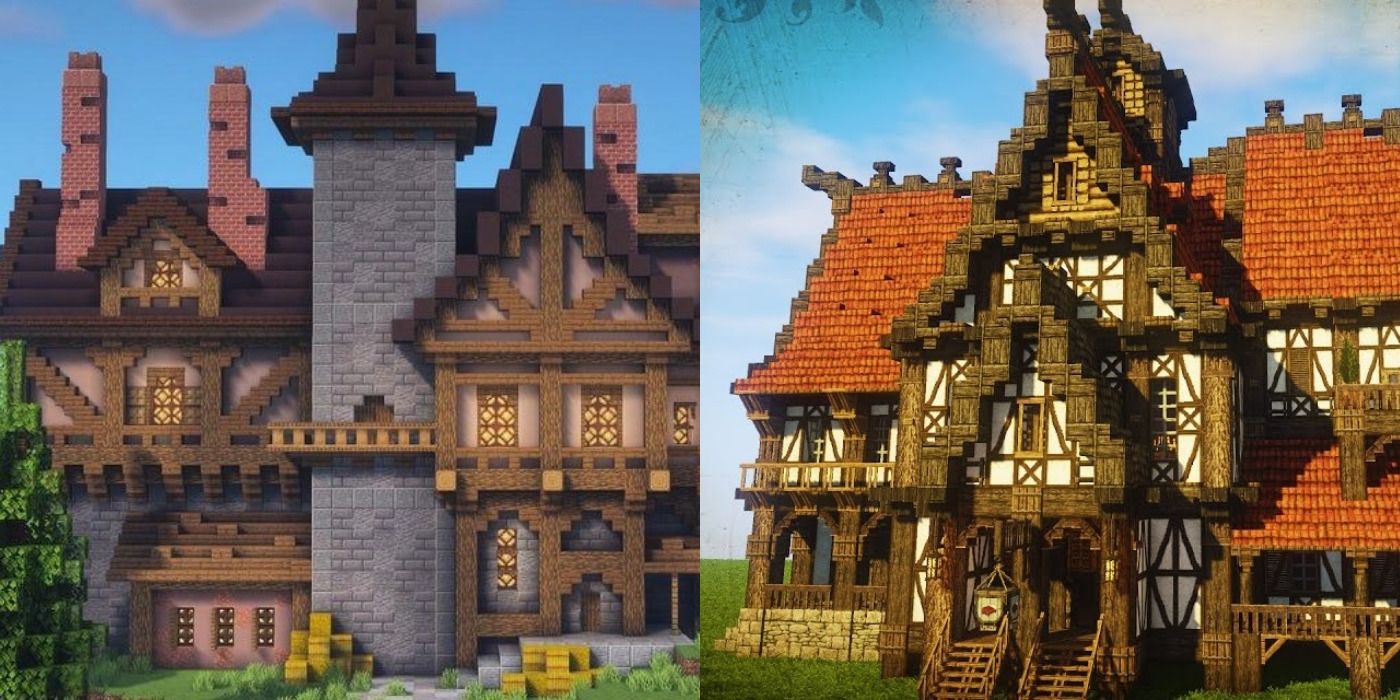

Stone and earthĭespite the evocative image of timber frames, stone, cobbles, brick and flint were used across England.

If you are trying to identify a Tudor or medieval home, or want to understand the authentic design elements for renovating a property of this era, then look out for these key features. Typical features of Tudor and medieval homes Employ specialists who understands the house’s heritage and the materials they’re dealing with – it’s usually best practice to interfere with as little original material as possible.Houses of this age may well be listed, so check with the local conservation officer whether you need consent for planned maintenance works.
#Medieval house design Patch#
#Medieval house design how to#
Find out how to maintain and repair an original timber frame. Coupled with poor repairs this can lead to extensive decay. Timber is susceptible to the ravages of time and British weather.(Image credit: Lee Bilson) Maintenance issues Make the most of your hallway with these 20 traditional ideas. This marked the beginning of the end for the open hall, with the insertion of floors by the 15th century confining the hall to the ground floor, where it remains in homes today. Over time, the trend moved towards smaller halls, with emphasis placed on the private wings, except in the largest homes where the hall would maintain an air of prestige. And as with many things, the wealthier and more important you were, the more you had – with cross wings at both ends reflecting a higher status.

With the service rooms, private chambers began to be added along with the advent of two-storey wings known as cross wings. This was swiftly followed by the addition of service rooms, usually consisting of the pantry, for storing bread, and buttery, not for butter but for butts of wine and ale. This created a passage between the two doors, known as the ‘through’ or ‘cross passage’, which reduced draughts. It is easy to imagine an open hall filled with smoke and cold draughts, so unsurprisingly one of the first developments included the addition of a screen at the low end. (Image credit: Period Living / Paul Dixon) Discover how to design a kitchen that will suit a period home. In larger, more prosperous households, one of these outbuildings would have been a kitchen – placed away from the home as a precaution against fire. This had an opposite door that led out of the rear of the hall onto outbuildings. This was a basic set-up, with one end – the high end – home to the owner’s table, and at the other end – the low end – the main door would be located.

There was no chimney, the smoke would merely rise to the roof space and escape through forms of vents known as louvres. In the centre lay an open fire providing heat and, especially in the houses of lower society, a place for cooking. This was a singular space – open to the rafters – in which living, eating, and even sleeping took place. The most prevalent housing form during the later medieval period was the open hall. The houses of medieval and Tudor Britain were largely built with practicality in mind – the exteriors offering a clear reflection of the size and uses of spaces within, and little concern given to symmetry. Get inspiration, ideas and advice straight to your door every month with a subscription (opens in new tab). Period Living is the UK's best-selling period homes magazine.


 0 kommentar(er)
0 kommentar(er)
